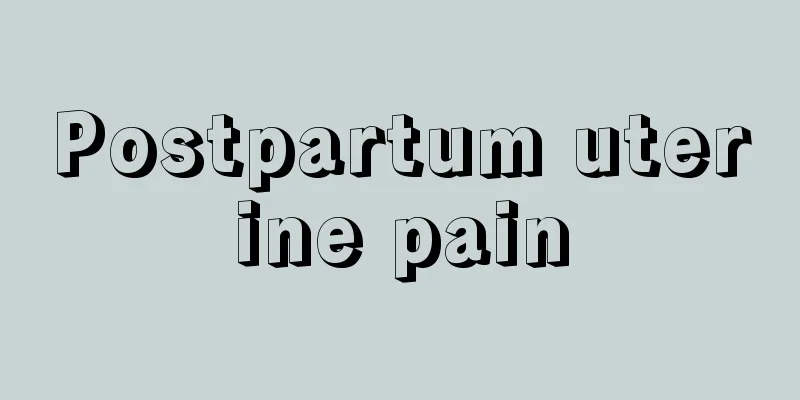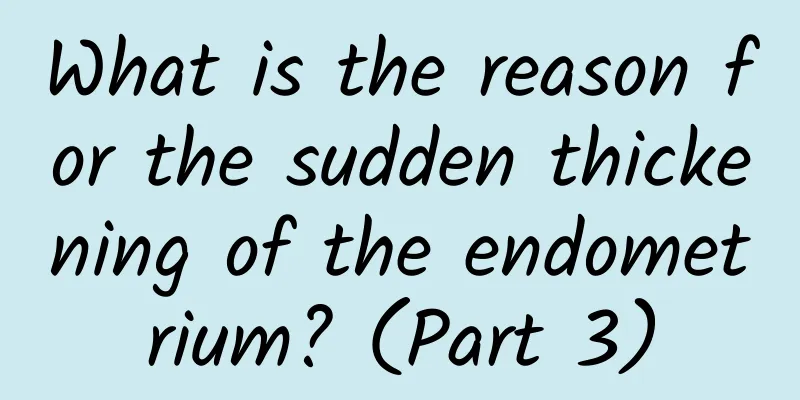Postpartum uterine pain

|
The abdominal pain after childbirth is usually lower abdominal pain, often accompanied by lochia failure or lochia obstruction. You can feel a lump when pressing the lower abdomen, which is actually the contracting uterus. So, why does the lower abdomen feel stretched and painful when walking after a normal birth? There are generally two reasons for lower abdominal pain after giving birth: uterine contraction and blood stasis. 1. Uterine contraction: After giving birth, the embryo, fetal membrane, uterine wall tunica, and accumulated blood remaining in the uterus need to rely on uterine contraction to be discharged one after another. Every time the uterus contracts, the mother will feel lower abdominal pain. This type of pain is paroxysmal and often occurs in mothers with a short delivery process or more frequent pregnancies. However, this type of postpartum abdominal pain usually disappears on its own and does not require any special treatment. 2. Qi and blood stasis: Postpartum abdominal pain caused by qi and blood stasis is also accompanied by a feeling of bloating and pain in the lower abdomen. If the mother catches a cold, gets angry, or does not exercise for a long time after giving birth, it is easy to cause blood stasis. The stagnant blood cannot be discharged, resulting in lower abdominal pain. This kind of pain requires the mother to regulate the blood and qi well and circulate the blood to relieve it. What should I do if I have abdominal pain after childbirth? The lower abdominal pain caused by uterine contraction will automatically disappear after the uterine contraction stops, and it usually lasts for 2-3 days, so the mother does not need to worry too much. If the abdominal pain is severe and unbearable, you can take some painkillers under the guidance of a doctor. As for the abdominal pain caused by blood stasis, pregnant mothers are advised to pay attention to the following aspects: 1. Prevent catching cold. Mothers should pay attention to keeping warm, especially the abdomen. There is no need to leave the abdomen exposed to the sun for a long time. It is best if the belt can cover the belly button. When sleeping at night, put a pure cotton towel or fleece blanket on the abdomen. 2. Do more activities. If the doctor says it is possible to get out of bed, the mother should walk around more often. If she cannot get out of bed, she should lie in bed and turn over more often to help blood circulation to prevent body stiffness and blood stasis. 3. Prevent anger. The mother should maintain a cheerful and optimistic mood and not easily lose her temper or get angry, otherwise it is easy to cause blood stasis. 4. When there is lower abdominal pain, the mother can apply heat or gentle massage to the lower abdomen to help blood circulation. 5. Eat foods that can promote blood circulation and remove blood stasis: Boil 100 grams of brown sugar and 10 grams of ginger in water to promote blood circulation and remove blood stasis. You can use 20 grams of brown sugar and 10 grams of cinnamon slices to boil in water and drink it, which can also relieve pain. |
<<: What causes acne on a woman's back?
>>: Bleeding after curettage during menopause
Recommend
How much do you know about the prevention and care of pressure ulcers?
With the aging of the population, the incidence o...
What to do if you vomit a lot during the night while pregnant
Severe vomiting during pregnancy is a common phys...
What is the reason for bleeding again after a few days of cleaning?
If a woman has to attend any activities or partic...
What does a positive test result mean?
Some women wonder if they are pregnant when their...
Is Bai Liuli a villain in Wu Xin: The Monster Killer 3? Why did Bai Liuli turn evil?
Recently, Wu Xin: The Monster Killer 3, starring ...
What are the differences between endometrial cancer and cervical cancer?
In recent years, the number of cancer patients ha...
Effects of anesthesia during pregnancy
Once a woman becomes pregnant, her body is in a w...
What should girls do if their vulva is itchy?
Vulvar itching in girls is a very common gynecolo...
Symptoms of bacterial vaginitis
The occurrence of vaginitis has a great impact on...
Symptoms after using Kangfu Anti-inflammatory Suppository
Kangfu anti-inflammatory suppository usually take...
Normal values of luteinizing hormone
Luteinizing hormone is an important hormone in th...
Can I eat peppers while breastfeeding?
There are many things that women who are breastfe...
What's the matter with a meat ball growing in a woman's buttocks?
Women's health is a key issue that cannot be ...
What happens if progesterone is low during the second trimester?
The progesterone level of women will be different...
What if I have my period midway?
In fact, women's physiological cycle is const...









